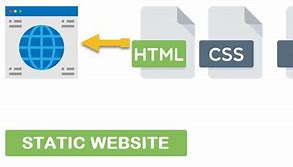Pros:
- Fast Loading Times:
- Static websites are usually faster to load because they serve pre-rendered HTML pages directly to the browser without the need for server-side processing.
- Simplicity:
- Static websites are simpler to build and manage. They consist of fixed content (HTML, CSS, and images) and do not require databases or complex server-side scripts.
- Cost-Effective:
- Building and hosting a static website is often less expensive compared to dynamic websites. Since there are fewer technical resources involved (no need for server-side processing or databases), hosting fees are generally lower.
- Improved Security:
- Static websites are more secure because they don’t rely on server-side processing, databases, or plugins, which reduces the risk of security vulnerabilities such as SQL injection attacks.
- Easy to Deploy:
- You can easily deploy a static website on any server or content delivery network (CDN). There’s no need to worry about server configurations, database management, or complex setups.
- Low Maintenance:
- Static websites require minimal maintenance since there are no dynamic elements to break or update regularly, such as databases or server-side scripts.
Cons:
- Limited Functionality:
- Static websites are not suitable for dynamic content or applications that require user interaction, such as login systems, e-commerce, or content that changes frequently. Every change requires manual updates to the HTML files.
- Difficult to Update:
- Updating a static website can be time-consuming, especially if you have multiple pages that need to reflect the same change. Each page must be manually edited unless you use automated tools.
- Scalability Issues:
- Static websites can become cumbersome to manage if the site grows significantly in size. With many pages, it becomes harder to maintain consistency and apply updates across the site.
- Lack of User Interaction:
- Features like search functionality, comments, forums, and interactive forms require dynamic processing, which static websites can’t provide without external services or significant customization.
- Not Suitable for Large Projects:
- If your website requires complex features like databases, content management systems (CMS), or user-generated content, a static website won’t be able to meet these needs.
- SEO Limitations:
- While static websites can be SEO-friendly, it can be harder to optimize them for large-scale content management. Dynamic websites with CMS platforms like WordPress offer better tools for managing SEO across many pages.
Conclusion:
Static websites are ideal for smaller projects, portfolios, or sites that don’t require regular updates or user interaction. However, for more complex websites, a dynamic solution may be more appropriate.

